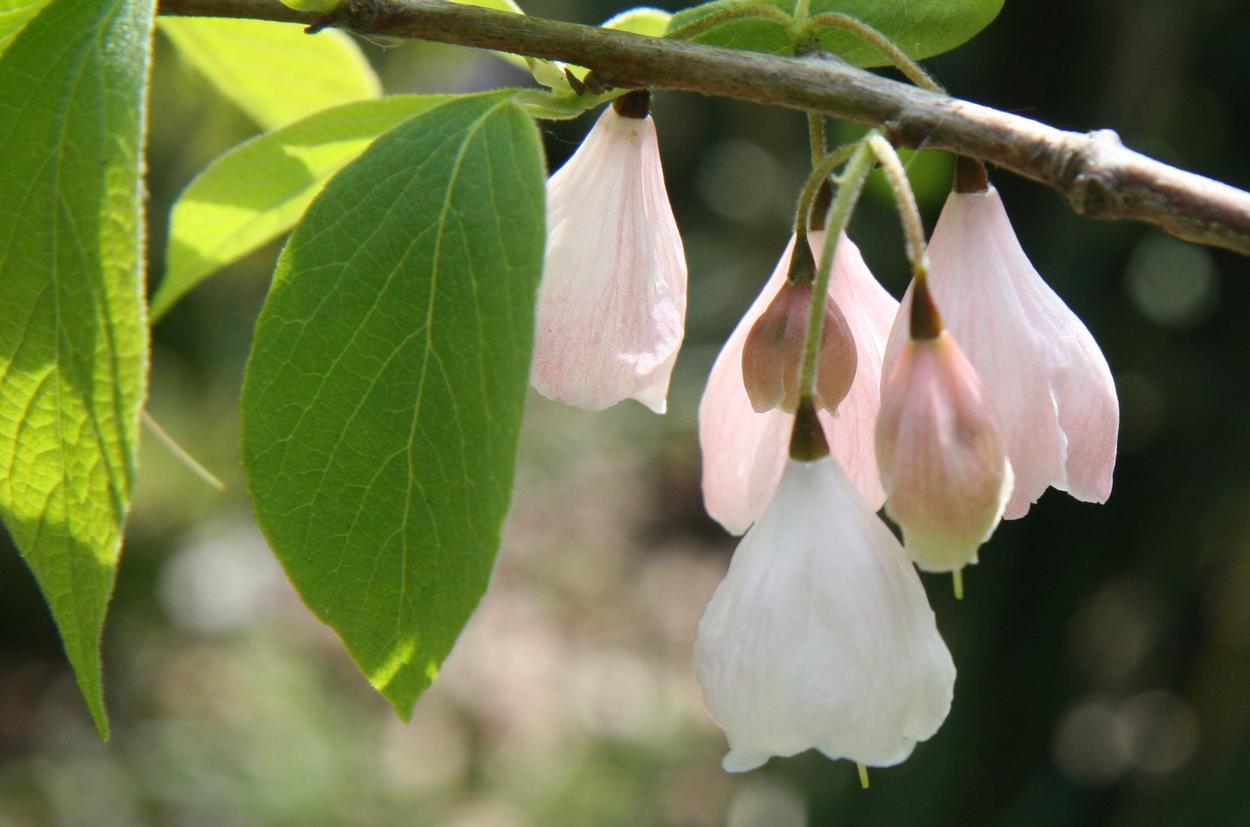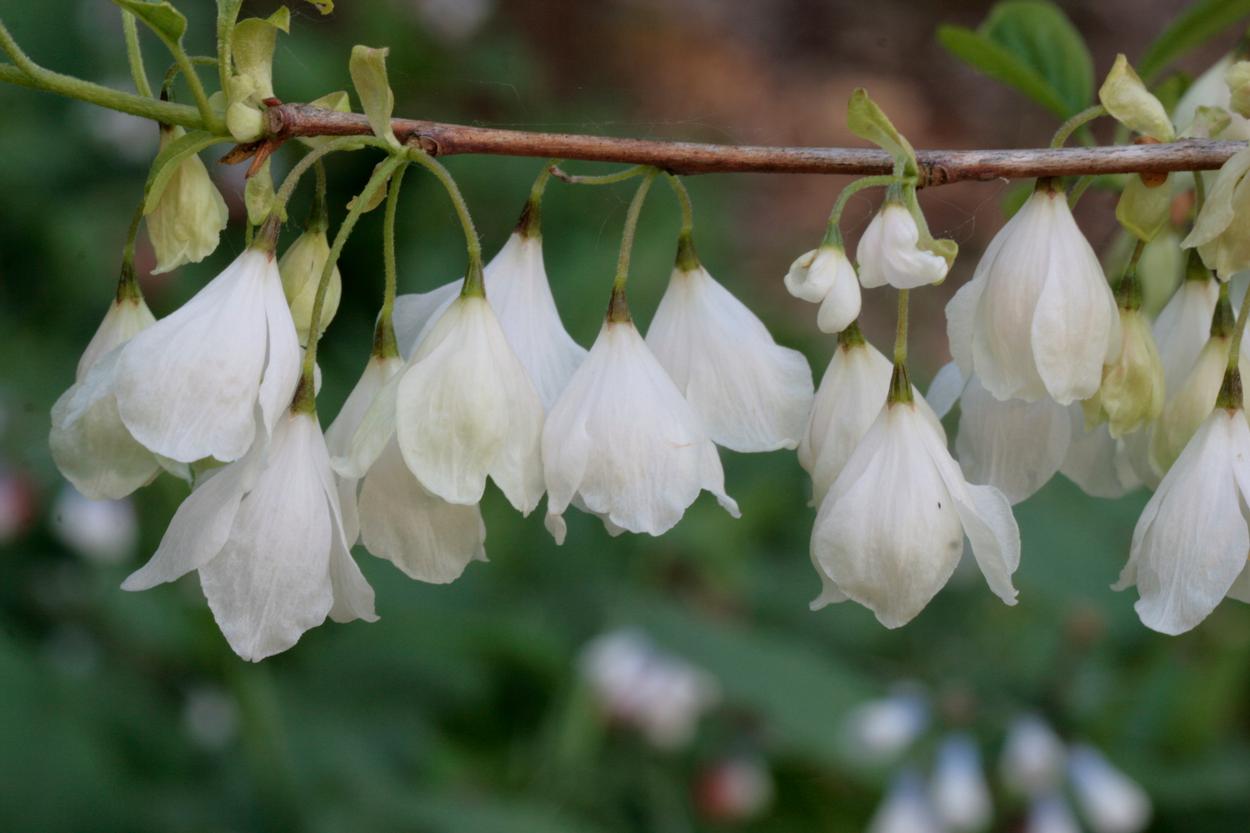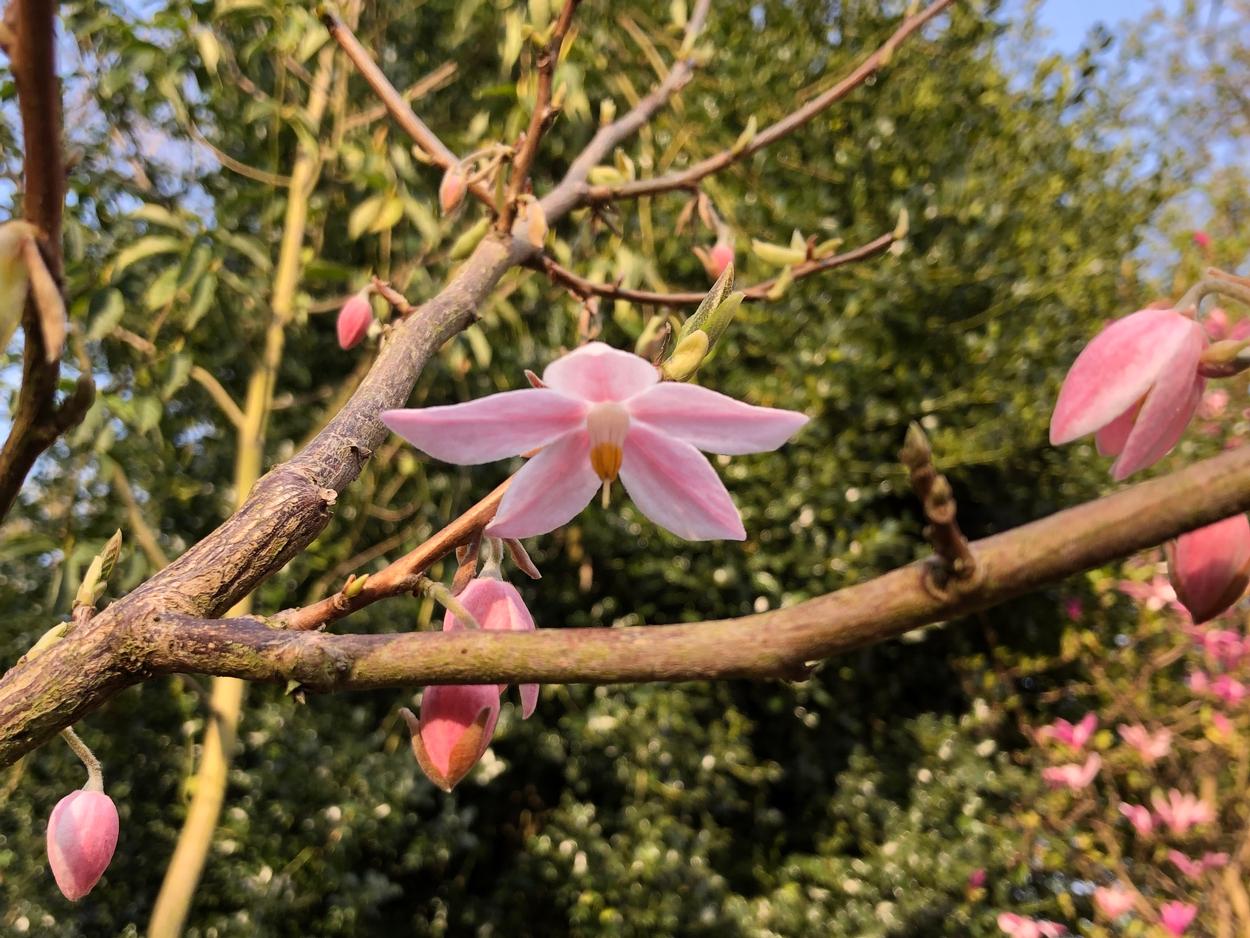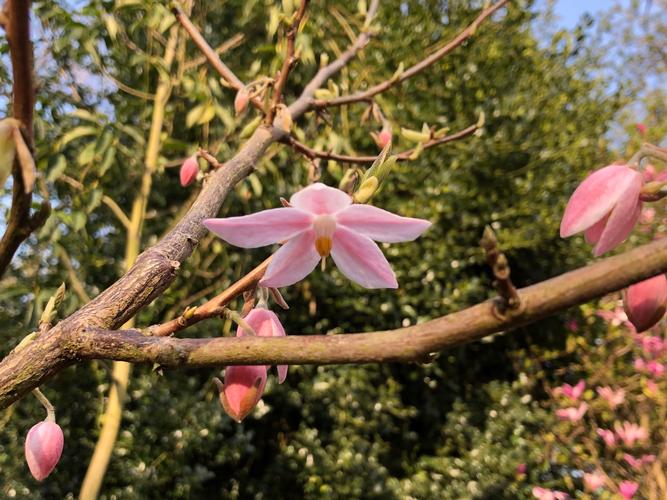Halesia, or the snowdrop tree as it is otherwise known are small deciduous trees or large shrubs, native to eastern America and south east Asia with simple ovate leaves and pendant clusters of 2-6 white bell-shaped flowers in spring followed by distinctive winged fruits before the leaves turn buttery yellow in autumn. They belong to the family Styracaceae which includes Styrax or snowbell tree about which I have written before. There are 5 species in the genus but only two or three are widely available in cultivation in the UK.
H. carolina, common name Carolina silverbell or snowdrop tree, which has delicately scented flowers in April-May. There is confusion surrounding its name which is often listed as Halesia tetraptera. Cultivars available include H. ‘Arnold Pink’ which makes a large shrub to medium tree up to 5m with a rounded crown. Bell shaped, rosy pink flowers appear in spring, and fade to light pink. The stems and twigs also have a pink hue.

Halesia tetraptera ‘Arnold Pink’
H. monticola, common name mountain silverbell or snowdrop tree. This is the largest variety reaching up to 12m and has leaves and flowers that are larger than H.carolina.

Halesia monticola
All Halesias are hardy down to -15C, but do best in a sheltered sunny spot in moist fertile soil, neutral to slightly acidic with some shade. They have a central trunk but develop a drooping habit and, where the mature branches touch the ground, elderly trees often layer themselves and produce new growth from the edge of their crowns. They are particularly well suited to the edges of woodland underplanted with seasonal bulbs.
A magnificent display is created in late spring, when pendent clusters of white, bell-shaped flowers appear. These emerge at the same time as the fresh green leaves, which will later turn buttery shades in autumn before they fall. The flowers are followed by persistent, winged fruits, that will often stay on the tree into winter. A beautiful, deciduous tree that works well on the edges of a woodland garden, especially when underplanted with seasonal bulbs.
A relative of Styrax and Halesia is Melliodendron xylocarpum. It also makes a small tree 3-5m at most and carries beautiful star shaped flowers, variable in colour from white to pale pink to clear pink in spring. Melliodendron is a native to China and is rarely seen in cultivation in the UK, possibly as it can be a fickle plant to grow successfully. It can be frost sensitive and requires a sunny sheltered site, moist but well drained. I planted my first Melliodendron last year and was delighted when it produced flowers, opening pink from darker buds this April, confirming that it does indeed flower from a young age. I hope it continues to thrive here at Green Island Gardens in the shelter of the woodland.

Melliodendron xylocarpum
All the above trees as well as a variety of Styrax can be seen at Green Island Gardens, in Ardleigh.
Some can also be purchased in the nursery both of which are now open again.





